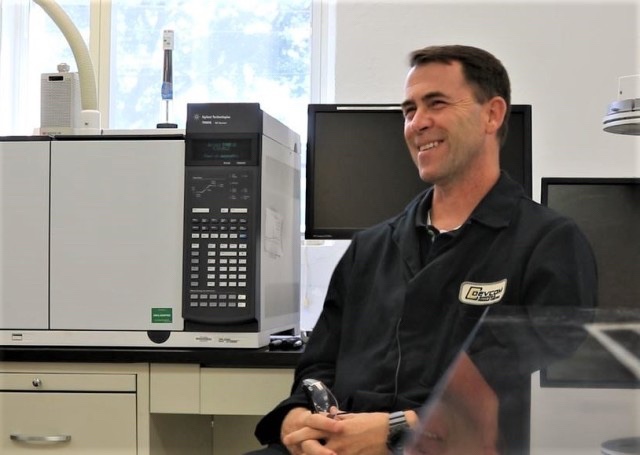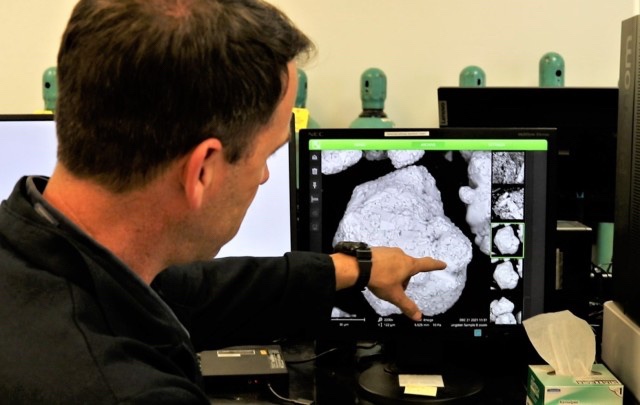
REDSTONE ARSENAL, Ala. — Thinking about a chemistry lab usually evokes visions of beakers bubbling with solutions, Bunsen burners, perhaps a giant periodic table taped to the wall. But this is not that type of chemistry lab.
The U.S. Army Combat Capabilities Development Command Aviation & Missile Center Propulsion Engineering Analytical Chemistry laboratory works on the Center’s stockpile reliability programs where they conduct prognostic aging and safe life assessment through disassembly of weapon systems detailed chemical analysis.
“The ammunition and explosives mission is one which spans the entire weapons system life cycle — from early research and development, to production, to sustainment and eventually demilitarization,” said Dr. Robert Little, chief for the Propulsion Engineering Division. “In each phase, there are hazards and risks to be managed. The Analytical Chemistry laboratory, and the core competencies of the trained personnel, are key elements to ensure that explosive stability and safety are maintained for fielded weapons systems in their intended tactical environments.”
Simply put, it is not enough to make sure the energetic materials — propellants, pyrotechnics and explosives utilized in weapon systems — work, they must continue to work, across many years and a full spectrum of military tactical environments.
“A rocket motor in Afghanistan, for example, is in a hot, arid climate so propellant stabilizer depletion is faster at elevated temperatures,” said Chris Marshall, supervisory chemist for the lab. “In a cooler environment it is much slower. Propellant in a TOW missile in Afghanistan may become unsafe for use and storage after as little as 10 years, if subject to solar radiation heating. In Alaska, based on a much lower temperature it may be 30 years.”

The lab team does not just work on fielded weapons systems, it also helps develop the next generation of propellants for use in solid fuel ramjet, an airbreathing jet propulsion engine that employs a continuous combustion process.
“We try to find new methods to analyze new propellant formulations — including novel energetic formulations and new energetics molecules. Research chemists will bring them to us and say, ‘How do I get the composition and ballistic properties of this new formulation?’” Marshall said.
Additionally, the lab works on missile failures.
“We may have a missile in theater malfunction, and we get samples back and we’ll analyze all failure modes to figure out what happened,” Marshall said. “Why we had a misfire, hang-fire, detonation or deflagration event. We work on failure reviews for production as well. We work with our contracting partners that make the missiles and when they have issues, this lab will partner with them, their chemists and their labs, trying to multitask issues. Since this lab has diagnostic capabilities in explosives compositions and their properties, we can do things that vendors may not be equipped to do.”
This is not the type of subject matter expertise that can be learned in undergraduate school — there is no “Energetics 101.”
“You have to grow an energetic chemist, mentor and train,” Marshall said. “There’s a lot of hands-on training — hands-on work — you can’t really teach it because you are not going to handle this stuff in school. We try to always team a younger engineer or scientist with an older, more seasoned professional to help mentor that person.”
For the Analytical Chemistry Lab team, their work gives them the opportunity to work in scientific innovation while also support not just the Army but also the Navy, Air Force and international allies.
“We know what we’re doing every day protects our service members — protects our sons, daughters, and grandchildren. We want to protect those lives.”
By Katie Davis Skelley, DEVCOM Aviation & Missile Center Public Affairs

